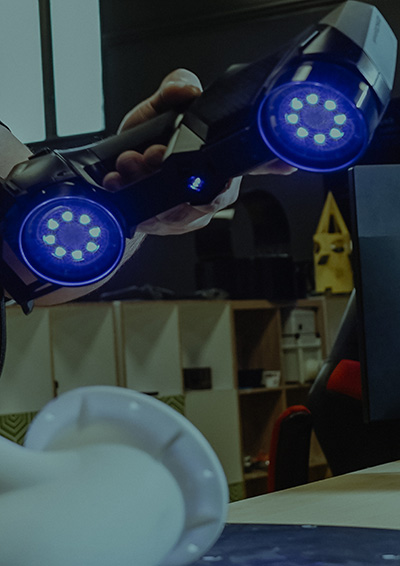Manufacturing and engineering | Te ohu waihaka
On this page
Situation

The manufacturing and engineering sector is the ‘engine-room’ of Southland Murihiku – from processing the region’s abundance of primary products through to high-tech fibreglass, carbon and additive (also known as 3D) manufacturing. Manufacturing is highly connected across the region both within the sector (e.g., componentry) and across sectors (e.g., via supply chains).
[The manufacturing and engineering sector is covered by the Manufacturing ANZSIC code, with most employment in Southland falling into the sub-industry ANZSIC codes of food product manufacturing, primary metal and metal product manufacturing and wood product manufacturing.]
NZAS Tīwai Point looms large across Southland Murihiku, contributing $410 million to the economy (7 per cent of Southland’s GDP) with export revenue of around $1 billion each year. Approximately 1,000 full time equivalent employees and contractors work at the smelter. There are around another 1600 jobs, where people are not employed directly by the smelter but their jobs/work are linked to it.
New Zealand's Aluminium Smelter(external link) — NZAS
In 2021, the manufacturing sector contributed $990 million (in 2021 prices) to GDP in Southland Murikihu (14% of total GDP) and employed 8,100 people, 15% of the region’s workforce. Of this number, around 3,150 were employed in meat and meat product manufacturing and 950 in dairy product manufacturing. The manufacturing workforce is predominantly (around 75%) male and has a higher share of full-time workers than the Southland Murihiku region as a whole. The workforce is more ethnically diverse than the region as a whole, with higher proportions of Māori (19%) and Pasifika (5%) employees compared with the region’s workforce as a whole (13% and 2.0% respectively). Nearly 57% of the workforce is classified as low-skilled, suggesting potentially lower barriers to entry, although higher proportions of technicians and trades workers also suggest the importance of formal on-job training via apprenticeships.
Complications
The manufacturing and engineering sector is pivotal to the economy and the people of Southland Murihiku. The sector is prone to volatility in both the number employed and employment growth rate - likely in response to decisions made by a few large businesses in the sector. This vulnerability is clearly illustrated by the ongoing discussion about the future of NZAS Tīwai Point, and the Just Transition process being wrapped around this issue. Accompanying Southland Murihiku-specific issues is the emergence of exciting new local industries and, more generally, ‘Industry 4.0’ - advanced manufacturing driven by sweeping changes in automation, digitisation, and technological innovation.
Across the region
There is ongoing uncertainty of business viability surrounding the COVID-19 pandemic. Border restrictions and uncertainty around visa settings impact both workforce and customers. Supply chain constraints are being felt both internationally and locally across this highly connected sector.
Competition for labour and the recent increase in the minimum wage has resulted in wage pressures, and it seems inevitable that some of these costs will be passed on to the customer.
Technological advances are increasing efficiency, with the need for fewer and/or differently skilled workers in some areas.
Employers told us
There are significant skill shortages across all areas of the sector - both for the required number of staff, and in specific skill areas - as well as difficulty attracting and retaining staff.
Labour and skill gaps amplify a perceived lack of communication between industry and education providers to ensure that training is relevant and useful for the diverse range of businesses and roles.
There is also the recurring problem of a lack of work-readiness for some new entrants to the workforce.
Manufacturing businesses are often perceived as being conservative, with outdated business practices including a lack of strategic, governance and capital investment planning and knowledge.
Workers told us
Pay rates within the sector vary significantly, and the lower pay in some areas of industry can create significant issues for recruitment and retention of staff.
The predominantly full-time/fixed hours nature of the sector is one example of often inflexible working arrangements.
Work can be exhausting, repetitive, and carried out in a challenging work environment. This can lead to burn out, higher staff turnover and lost development opportunities.
The impact of the work environment is experienced inequitably, with Māori and Pacific peoples over-represented in workplace injuries, disabilities and life-long medical conditions.
These factors combine to produce a poor perception of the sector and there is a need to enhance the manufacturing ‘brand’ to support a pipeline of skilled workers, with more focus on pathways and integrated programmes to upskill and provide training opportunities.
Questions
- How do we attract, retain and develop an appropriately skilled manufacturing and engineering workforce to support the sector’s general needs, as well as supporting Industry 4.0 (advanced manufacturing needs)?
- What impact will the Just Transition Work Plan have on the sector (and the wider regional workforce), e.g. changing product base, manufacturing methods, future industries, workforce location etc?
- How do we manage critical labour and skill shortages in an increasingly competitive environment?
- How do we improve perceptions of the manufacturing and engineering sector?
- What will be the impact of technological changes: automation, high tech etc. – fewer jobs, a more highly skilled workforce or just differently skilled?

